Most people know that animals that evolved in the world’s oceans eventually became land animals, but did you know that some land animals evolved back into species that live in the ocean?
The Earth’s mass extinction events were the main reason driving these migrations back to the sea. They allowed for evolutionary changes based on dramatically altered ecosystems with new niches for development.
All marine mammals evolved from land animals that returned to the sea, representing most of the animals on this list. Like land animals, all marine mammals are warm-blooded, breathe air through their lungs, and nurse their babies with the milk they produce. They include the cetaceans, sirenians, and pinnipeds, though they are not the only animals to evolve from land into the sea.
Sea turtles and snakes also have terrestrial ancestors that chose to return to an aquatic life. Let’s discuss some lifestyle characteristics of 11 ocean animals that evolved from land animals to understand evolution’s complexity better.
11. Whales
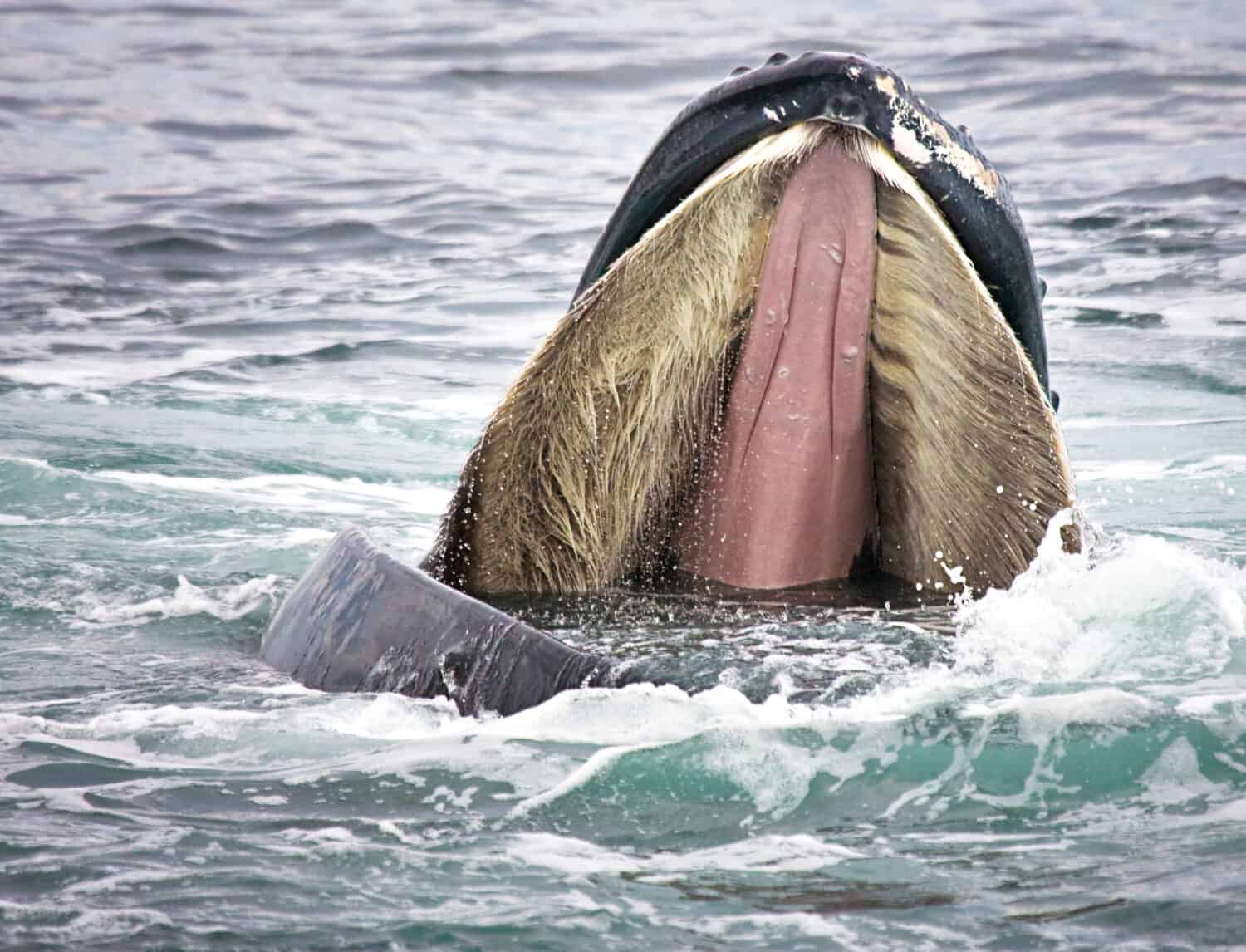
Baleen whales use keratin bristles to filter plankton out of seawater.
©John Tunney/Shutterstock.com
Whales are aquatic mammals that have evolved from a terrestrial ancestor called an artiodactyl, which looked like a little deer. From there, they evolved into amphibians before becoming the fully aquatic animals they are today. Some of the earliest whales were basilosaurids, remingtonocetids, protocetids, pakicetids, and ambulocetids. Today, the land animals most related to whales are hippopotamuses.
There are two main types of whales: toothed whales and baleen whales. However, when the term whale is colloquially, it usually refers to baleen whales. Toothed whales are dolphins and porpoises.
Baleen whales are carnivores using baleen plates made of keratin bristles to filter plankton from the ocean’s water. There are sixteen species of baleen whales currently living on Earth.
The blue whale, the largest animal on the planet, is a baleen whale. It weighs up to 210 short tons and can grow just over 100 feet long. This means that blue whales are the size of a ten-story building.
10. Porpoises
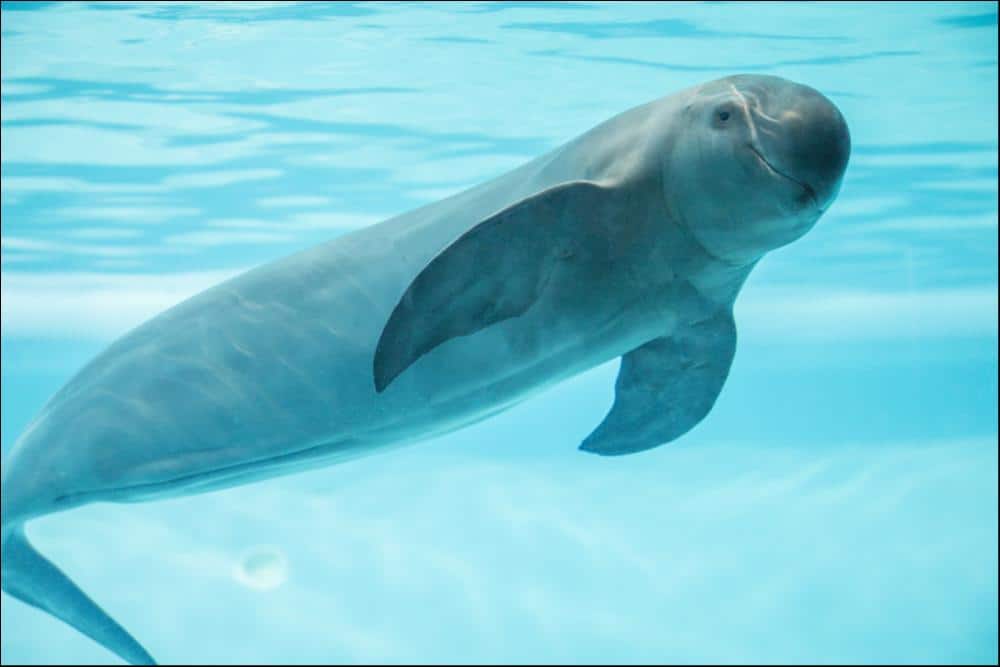
The
porpoise
diverged from dolphins about 15 million years ago.
©Takayuki Ohama/Shutterstock.com
Porpoises are toothed whales, and they started evolving separately from baleen whales about 34 million years ago. They further diverged from dolphins about 15 million years ago. They are the smallest-toothed whales, with the largest porpoise, the Dall’s porpoise, being no more than 7 and a half feet long.
There are 7 porpoises in various habitats, which can be found from the warm tropics to polar waters. They also live in the open ocean, along coastlines, and in some river systems.
9. Dolphins

Orcas are the largest dolphin species.
©slowmotiongli/Shutterstock.com
Dolphins are toothed whales, with orcas being the largest species. There are 40 different species of dolphins on Earth divided into 5 families based on where they live on the planet. Some dolphins live in the open ocean, some inhabit rivers, and others enjoy coastlines.
A dolphin’s limbs are similar to whales and porpoises in that they now have flippers instead of arms. However, these flippers contain finger and arm bones similar to those of humans and other land mammals. Where they differ greatly is that the bones are a much different size than those in a human appendage.
8. Narwhals

The large corkscrew horn adorning male narwhals is a huge canine tooth.
©iStock.com/dottedhippo
Narwhals are considered toothed whales. However, they don’t have true teeth. As an example of sexual dimorphism, males have a long corkscrew husk that’s one huge canine tooth. Females have no teeth, and males have no other teeth besides their one horn.
Narwhals feed through suctioning and vacuum up their targeted prey since they can’t bite or chew. They primarily dine on flatfish, halibut, and cod.
They live in the cold Arctic water near Russia, Canada, and Greenland, and it’s believed that porpoises and narwhals diverged from each other about 11 million years ago. Today, there are approximately 170 thousand narwhals on Earth, though they suffer from low genetic diversity.
7. Dugongs

Dugongs rely on coastal seagrass meadows as they are completely herbivorous.
©Laura Dts/Shutterstock.com
Sirenians are related to elephants, and they are the only marine mammals that are completely herbivorous. Dugongs and manatees are both sirenians, the first type of mammal to head back into the ocean from land.
Dugongs rely on seagrass meadows that grow in coastal regions, and they range through these kinds of habitats in the Indo-Pacific. Their most stable populations are in areas off the northern coast of Western Australia, along the Northern Territory, and in the northern parts of Queensland.
Dugongs have flippers for forelimbs, and they do not have dorsal fins. They grow up to 10 feet long and reach a maximum weight of 930 pounds. However, it’s not unheard of for them to be over 13 feet long and weigh more than 1900 pounds, though it is rare.
6. Manatees
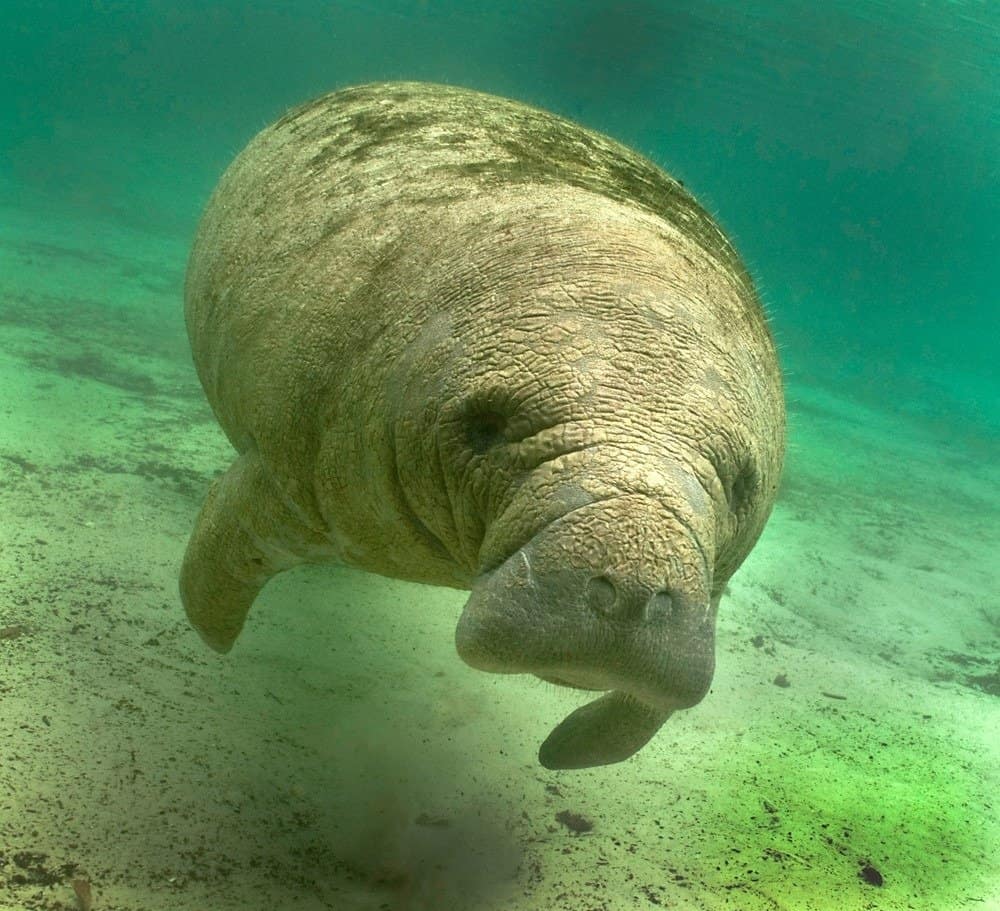
Also called sea cows, manatees spend half their day grazing on freshwater and saltwater plants.
©gary powell/Shutterstock.com
Manatees, called sea cows, are herbivores that eat saltwater and freshwater plants. Three different species live around West Africa: the Caribbean, the Gulf of Mexico, and the Amazon basin.
The manatee probably first became aquatic in the river systems of South America before branching out into the wider ocean and colonizing Africa. However, fossil records are lacking, so scientists aren’t sure if this is what happened. If this kind of divergence did occur, it probably happened two to four million years ago.
Manatees are called sea cows because they’re slow and friendly grazers that eat a little over 10 percent of their body weight in vegetation daily. Most manatees are about 10 feet long and weigh up to 1200 pounds, though they can be about twice as large.
Manatees and dugongs are both sirenians, the biggest difference being their tails. Dugongs have whale-like tails, while manatees have tails that look like paddles.
Manatees spend half of their days grazing and the other half sleeping. They surface every 20 minutes or less to breathe while napping.
They have 6 flat teeth on either side of their mouths that fall out and are replaced frequently in a way similar to that of an elephant. This is one piece of evidence showing that manatees are closely related to today’s land elephants.
5. Walruses
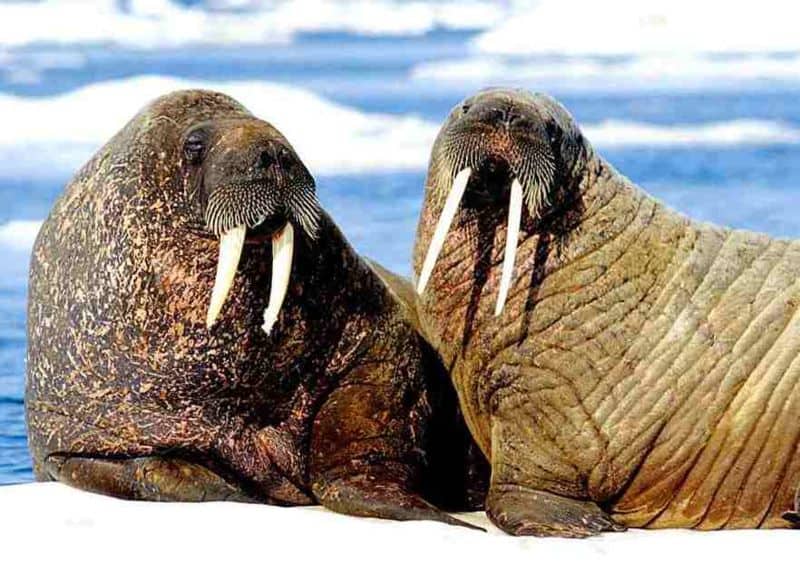
Walruses weigh up to 2000 pounds and like to come into physical contact with each other.
©Ansgar Walk / CC BY-SA 3.0 - License
Pinnipeds, like walruses, seals, and sea lions, are related to bears and dogs, and they rely on the flippers they have to move around on land and in the water. While they spend most of their time in the water, they must come to land to molt, give birth, and rest.
There are two subspecies of walrus: the Pacific and the Atlantic walrus. They are a keystone species in the Arctic, and they spend most of their time hanging out on the ice or looking for mollusks on the ocean bottom. They are the most social of the pinnipeds, so they often hang out in groups in the water and out of the water while coming into purposeful physical contact with each other.
Walruses weigh up to 2000 pounds, though some individuals can be twice as big. They can walk on all four of their flippers when on land. Their most prominent feature is their huge tusks, oversized canines they haul themselves out of the water and bust holes in ice.
4. Seals

Elephant seals are the largest true seals and can weigh over 7 tons.
©FiledIMAGE/Shutterstock.com
True seals are pinnipeds, but not all pinnipeds are true seals. What makes a seal a true seal is that they do not have flaps around their ears and only has an earhole. They also crawl on their bellies while other pinnipeds use their flippers to move on land.
While seals venture outside the Arctic if the water is cold enough, the Arctic is their main habitat. Seals spend much time on land but are much more comfortable in the water.
They are adept swimmers, but they use their bellies to get around when out of the water. Seals rely on their ability to get out of the water to nurse pups, rest, mate with other individuals, and avoid becoming prey.
There are small seals, and there are large seals. For example, the Baikal seal grows up to 3 feet long and weighs no more than 100 pounds. On the other hand, male southern elephant seals can weigh over 7000 pounds and grow to 16 feet in length.
3. Sea Lions
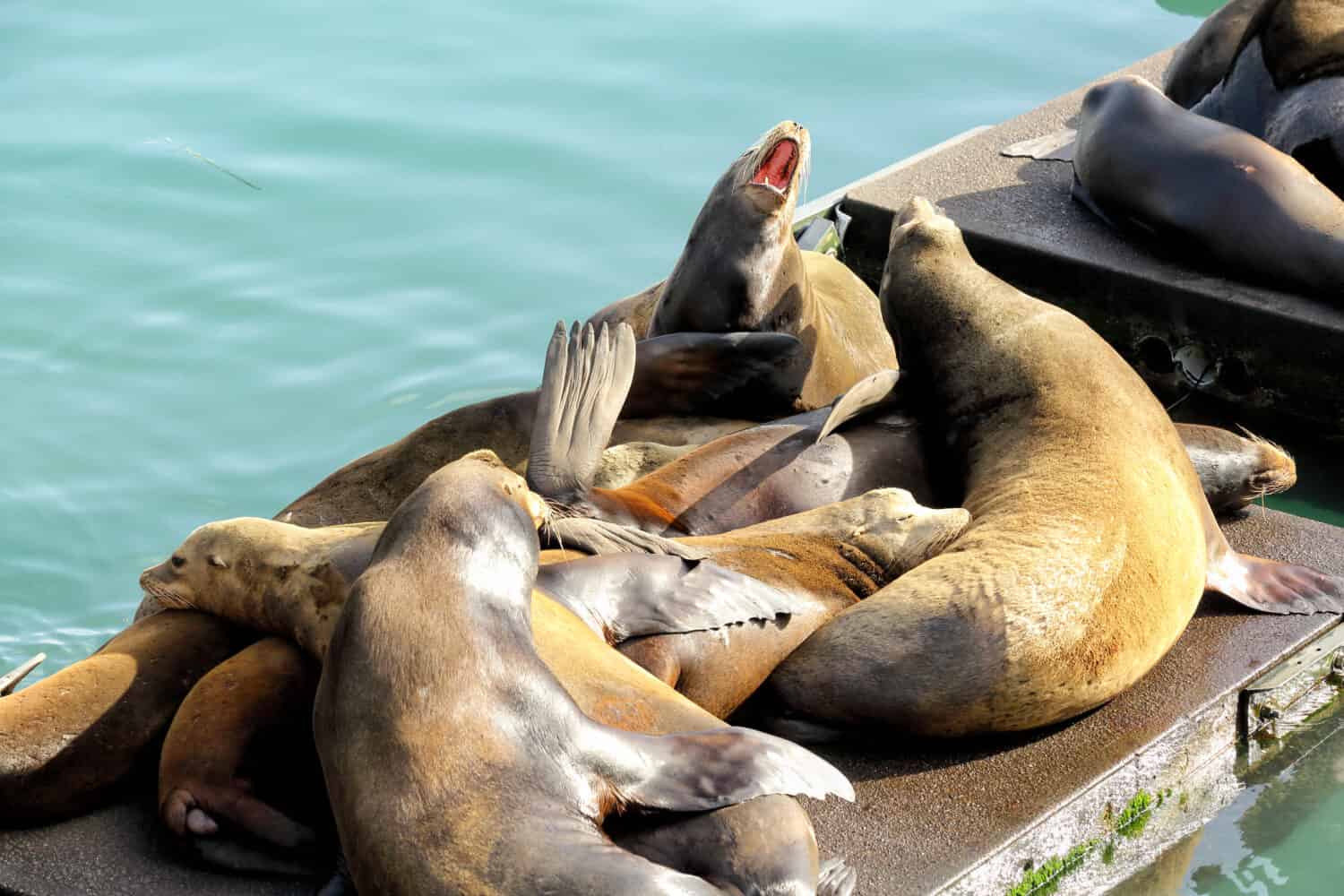
It’s not uncommon to see sea lions gathered in big groups on manmade objects like piers.
©B Brown/Shutterstock.com
Sea lions use their flippers to walk when they’re out of the water since they are ocean animals that evolved from land animals. They congregate in big groups when they hang out on shore. They also like to sit on manmade things like piers. There are six species on Earth, ranging from tropical waters to the subarctic region.
Sea lions are famous for their barking, and they can be very noisy when they gather in large groups. While sea lions are generally not aggressive, they become agitated when humans get too close. As a result, they are considered aggressive by seafarers and people who spend a lot of time by the ocean.
2. Sea Turtles
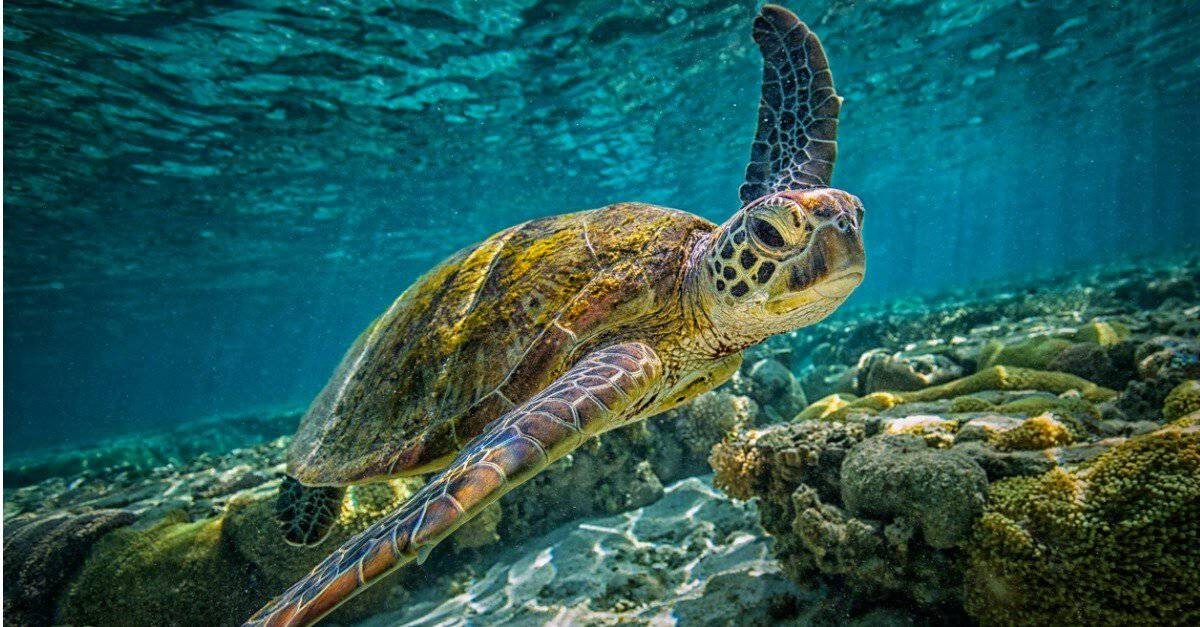
All
sea turtle
species have the same number of chromosomes which means they can hybridize.
©iStock.com/Greg Sullavan
Sea turtles became a distinct kind of turtle over 100 million years ago when they evolved from land to ocean animals. Their closest relatives are musk turtles, American tortuga blancas, and snapping turtles. There are seven sea turtle species on the planet, and even though sea turtles diverged from terrestrial turtles so long ago, all sea turtle species still have the same number of chromosomes.
Because sea turtle species have the same number of chromosomes, the separate species sometimes hybridize. Five species have produced six kinds of hybrids that scientists have discovered. These hybrids are found worldwide in Australia, Canada, Brazil, and Japan.
The bodies of sea turtles are more spindle-shaped than freshwater and terrestrial turtles. Sea turtles cannot pull their appendages or heads into their shells to protect themselves like other non-aquatic species because of their streamlined shape.
While sea turtles spend most of their lives underwater, they breathe air at the surface. When awake, they hold their breath for no longer than 40 minutes, but while sleeping, they hold it for more than four hours.
1. Sea Snakes

Sea snakes use their tail like a paddles and use one giant lung to breathe surface air.
©Tomas Kotouc/Shutterstock.com
Approximately 70 sea snakes spend almost all their time in water, even though these ocean animals originally evolved from land animals. Most of these species are venomous, and most of them cannot leave the water.
They’re related to land snakes from Australia, and they’re found along the warm coasts of the Pacific and Indian Oceans. They diverged from Australian terrestrial snakes about 10 million years ago.
Most species have a tail that acts as a paddle, and they’ve lost the scales necessary to move on land as they evolved to a fully aquatic life. Most have one huge lung since they still have to breathe air on the surface, almost as long as their body.
The photo featured at the top of this post is © Sergey Uryadnikov/Shutterstock.com
Thank you for reading! Have some feedback for us? Contact the AZ Animals editorial team.






